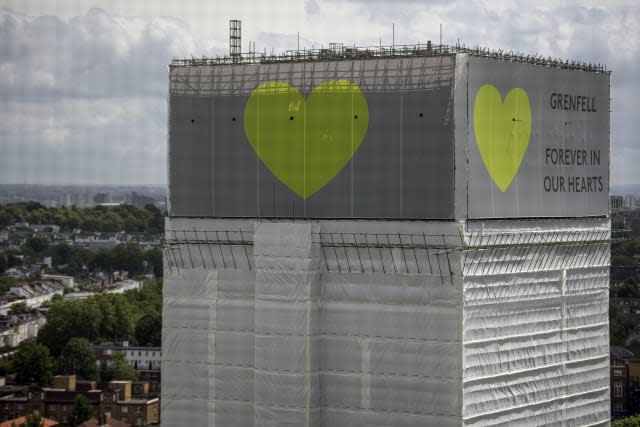We lost the battle at Grenfell Tower, firefighter tells inquiry

Fire crews attempting to rescue people from Grenfell Tower and control the blaze "lost the battle" against the building, a watch manager has said.
Once the cladding caught alight, crews would not have been able to keep up with its rapid spread no matter how many more boots were on the ground, Paul Watson, watch manager at Hammersmith fire station, said.
He also described being unable to activate an automatic fire alarm throughout the building, poor radio reception and being "a bit confused" by the system of passing on 999 call information.
In a written statement to the public inquiry, Mr Watson said: "Once the fire caught the cladding, and surrounded the building, we could have had a lot more firefighters on the ground but we wouldn't have put that job out. It moved so fast.
"The building didn't do its job and the building beat us.
"I came away thinking that we lost the battle and the building beat us.
"I know we saved a lot of people but I know we lost a lot of people.
"I came away from a low on that job as although we did the best we could, circumstances, particularly the building, beat us."

Mr Watson was in charge of a staging post on the ground floor, where he was holding firefighters until the bridgehead, a coordination point tracking entry into the building, was ready for them.
While there, a firefighter radioed him to say it appeared no fire alarms were sounding in the building.
He attempted to find an automatic fire alarm panel, but was unsuccessful, agreeing it was unusual not to find an automatic fire alarm system in a high-rise building.
Mr Watson also recalled the radios were "difficult to use" as there was "poor" reception and too many people trying to communicate at the same time.
He later moved to the second floor and started passing on information from 999 calls made by trapped residents.

He wrote floor and flat numbers on pieces of paper, and handed them to firefighters, who then gave them to people on the bridgehead who recorded which flat they were going to.
He said in the written statement: "I was then, and I still am, a bit confused that we had this system in place.
"Normally all of the FSG (fire survival guidance) information goes from the control unit straight to the bridgehead.
"But on this occasion we had the information going to watch manager (Glynn) Williams at the door, then to me, then to the firefighters who took the slips up to the bridgehead."
The public inquiry is being held at Holborn Bars, in central London.

Senior fire officer Gareth Cook gave evidence after Mr Watson, describing a catalogue of problems which hindered operations on the night.
Mr Cook, a station manager based in north-west London, said the smoke extraction system, which should have kept the stairwells clear, was not working.
He also recalled problems using the dry riser - a dry main which requires crews to pump water from their engine into a hollow pipe running through the building, allowing them to screw in hoses at points on each floor.
Teams were forced to heave hoses up flights of stairs because there was no safe place to set it up, he said.
He also had to fix several broken hoses, which were causing water to gush out, and a "massive issue" regarding water pressure.
Falling debris had caused the dry riser hose to be "stabbed and punctured", he said, which heavily reduced the amount of water being delivered.
In addition, at a routine familiarisation visit made to the tower before the fire, he said he could not recall seeing a "premises information plate", which gives crews key information about the building.


